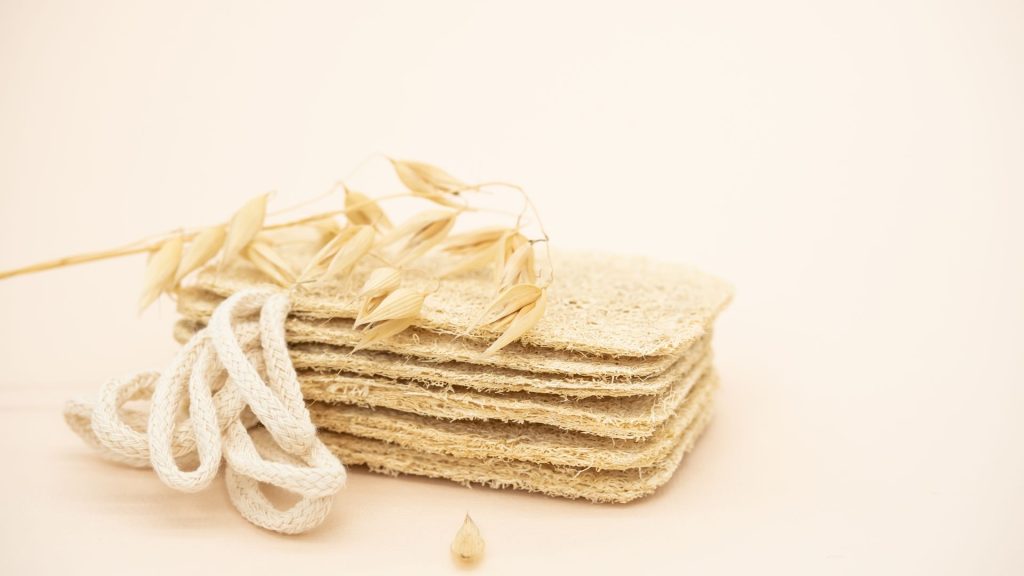
Menstrual hygiene issues pose a substantial obstacle to school attendance and success for girls in low-income countries, leading to infections and ultimately diminishing academic performance in schools.
Organizations are taking measures to produce environmentally-friendly feminine hygiene products, using materials sourced locally and less polluting than standard plastic pads.
1. Bamboo
Making your pad more environmentally-friendly by choosing bamboo as its foundation material is an eco-friendly decision. Bamboo plants grow without needing water, fertilizers or pesticides to thrive.
Rice fabric is abundant with antimicrobials that work to naturally kill germs, while still being breathable and absorbent compared to cotton. Furthermore, its cultivation follows stringent international standards, making it a sustainable resource.
For DIY menstrual pads, thick fabric (cotton is ideal), a marker pen, ruler and scissors will all be necessary. Once you have these materials ready, trace a template on fabric with marker pen before cutting out each piece from either cotton flannel or cotton fabric – this step may also involve sewing up two separate pieces before closing up with buttons at its center to close up your pad!
2. Banana Tree
Bananas are beloved tropical fruit, but did you know they can also be used to produce eco-friendly sanitary pads? Made of banana fiber – an eco-friendly material which benefits women and the environment alike – banana fiber pads offer women natural alternatives to plastic pads while offering the environment more sustainable solutions.
Saathi, a new company using banana stem fiber to manufacture menstrual hygiene products that are both biodegradable and reusable, aims to help rural women avoid health complications by offering more comfortable and safer alternatives to disposable sanitary pads.
Sustainable materials can have a significant effect on the environment, with traditional pads taking years to decompose in landfills while biodegradable ones break down quickly, without releasing harmful chemicals into the soil.
They can also be made locally in smaller villages to reduce production and distribution costs and allow more girls and women to continue their education and employment without taking time off due to menstruation.
3. Cotton
Cotton makes for an eco-friendly and breathable DIY sanitary pad material, without irritating skin like some plastic-based options can.
Jeff Bates of the University of Utah Materials Science and Engineering Department developed a 100% biodegradable feminine maxi pad made of natural fabrics that is much thinner and more comfortable than traditional pads. His team created it.
Contrary to conventional pads, which consist of wood pulp, superabsorbent polymers (SAPs), cotton fibers and plastic components, biodegradable pads consist solely of bamboo fiber. Bamboo’s water-absorbing capabilities allow it to absorb 3-4 times as much moisture while simultaneously controlling odour production.
These pads feature an outer covering made from biodegradable material like cotton or rayon that is sewn together along the edges, enabling local manufacture and combatting period poverty. Furthermore, these compostable and worm-friendly pads can decompose in 90 to 180 days when left to decompose in soil.
4. Plant Fibers
As part of their search for more sustainable alternatives to disposable plastic pads, Stanford researchers discovered that stem fibers from an Agave sisalana hardy succulent could be processed into absorbent menstrual napkins. Their team worked on processing these fibers into soft and fluffy material that can be used as menstrual napkins.
Researchers discovered that fibrous cells — which were many times longer than they were wide — had great tensile strength, making them ideal for weaving into absorbent sheets. Furthermore, these natural plant fibers are biodegradable and could even be repurposed as compost or used as fuel in future projects.
The research paper describes the process for producing cotton or rayon sanitary napkins using a die to bring together an inner absorbent layer and outer covering material into one cohesive pad, then compress them together using pressure. This results in an inherently absorbent inner sliver with an outer cover woven from cotton or rayon that serves to absorb any spillages during usage.


